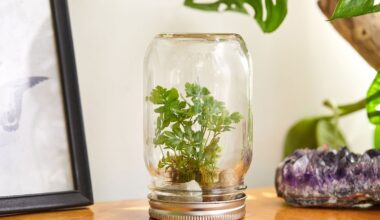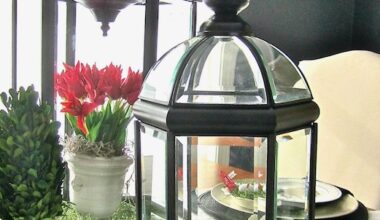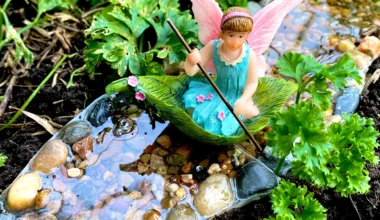Exploring the world of garden vegetable layouts can be both exciting and rewarding.
Whether you’re a seasoned gardener or just starting out, planning the arrangement of your vegetables is essential for a successful harvest.
In this article, we’ll delve into some of the best and simplest layout ideas to help you make the most of your garden space
1. Homestead Garden Layout Idea

The Homestead Garden stands as a testament to self-sufficiency and sustainability. It encompass a larger expanse compared to conventional backyard gardens. Its purpose extends beyond mere sustenance, often serving as a hub for trading or selling surplus produce.
While raised beds may adorn the area nearer to the house, the bulk of cultivation occurs in traditional in-ground rows, maximizing space efficiency and promoting traditional farming practices.
Moreover, the Homestead Garden often integrates small-scale animal husbandry, with chickens or bees roaming freely, contributing to pollination and providing additional resources like eggs and honey.
This holistic approach to gardening fosters not only self-reliance but also community engagement, as surplus yields are often exchanged locally, strengthening social ties and supporting the local economy.
2. Square-Foot Gardening

Square-Foot Gardening (SFG) revolutionizes space efficiency in home gardening, employing a systematic approach to maximize yield within limited areas.
Traditionally, an SFG garden comprises multiple 4 x 4 foot “boxes,” essentially deeply-raised beds, meticulously designed to accommodate dense planting for successive harvests.
A lattice overlay divides each square foot, providing a visual and practical demarcation for planting different crops.
Unlike conventional gardening methods with sprawling rows, the elimination of traditional rows in SFG minimizes weed proliferation, significantly reducing maintenance efforts—an attractive feature, especially for novice gardeners.
3. The Pollinator Garden

The Pollinator Garden concept transcends mere aesthetics, offering a sanctuary for local pollinators while enhancing the beauty of your outdoor space.
By strategically planting a variety of flowers, shrubs, and trees that attract and nourish pollinators such as bees, butterflies, and hummingbirds, you not only create a visually stunning landscape but also play a crucial role in ecosystem conservation.
4. Fragrant Garden

A Fragrant Garden transcends the visual allure of traditional landscapes, captivating the soul with a symphony of scents that dance on the breeze.
This sensory haven beckons you to immerse yourself fully, engaging not only your eyes but also your sense of smell in a blissful journey through nature’s aromatic delights.
In a Fragrant Garden, every plant is carefully selected for its olfactory appeal, ensuring a continuous tapestry of enticing scents throughout the seasons.
From delicate flowers to aromatic shrubs, each addition contributes to the garden’s aromatic symphony, creating an atmosphere of serenity and tranquility.
5. Backyard Garden Layouts

In the dynamic landscape of a backyard, where family demands intertwine with the desire for greenery and growth, crafting a garden that seamlessly integrates into daily life is both an art and a science.
These complementary backyard garden layouts offer inspiration for creating a harmonious space where recreation, relaxation, and cultivation converge.
6. Herb Garden

Even in the confines of limited space, the Herb Garden emerges as a beacon of culinary creativity and aromatic abundance, just a step away from your door.
By assembling a curated collection of pots and containers, you can cultivate a diverse array of herbs, both familiar and exotic, enriching your culinary repertoire and tantalizing your taste buds with new flavors and fragrances.
In the compact confines of an Herb Garden, every pot becomes a canvas for culinary exploration.
From perennial stalwarts to annual delights, each herb finds its place in the sun, ready to impart its distinctive essence to your dishes.
Whether it’s the familiar fragrance of basil or the exotic allure of lemongrass, the Herb Garden invites you on a journey of discovery and delight.
Tips for Success:
- Strategic Selection: Choose herbs that not only complement your culinary preferences but also thrive in your local climate and growing conditions. Opt for a mix of familiar favorites and lesser-known varieties to expand your culinary horizons and unearth new favorites.
- Mindful Maintenance: While some herbs are annual and require replanting each year, others are perennial, returning season after season with minimal effort. Ensure adequate space for perennial herbs to spread and thrive, selecting a sunny spot in your garden where they can flourish.
7. Kitchen Garden Layouts (Potager)

Step into the enchanting realm of the Kitchen Garden, where the symphony of flavors and fragrances awaits just beyond your doorstep.
Here, amidst a living tapestry of vegetables, fruits, herbs, and flowers, culinary delights come to life, offering a continuous supply of fresh, vibrant produce for your kitchen table.
At the heart of the Kitchen Garden lies its charm and allure—the seamless integration of vegetables, fruits, herbs, and flowers into a harmonious landscape of abundance.
This dynamic interplay of diverse elements not only creates a visually captivating scene but also serves a practical purpose, providing a bountiful harvest of fresh, seasonal delights for culinary creations.
8. Porch Border Garden

This charming garden design not only enhances the aesthetic appeal of your porch but also creates a seamless transition between indoor and outdoor living areas, inviting you to relax and savor the beauty of nature right at your doorstep.
The Porch Border Garden is characterized by its strategic placement along the perimeter of your porch, framing the space with a lush tapestry of plants and flowers. Whether in raised beds, containers, or directly in the ground, this garden design adds visual interest and creates a sense of enclosure, enhancing the ambiance of your porch while providing privacy and shade.
Choose a diverse mix of plants that thrive in your local climate and growing conditions, incorporating a variety of colors, heights, and textures to create visual appeal.
Arrange plants in layers, with taller specimens positioned towards the back and shorter ones towards the front, to create depth and dimension in your Border Garden.
Consider incorporating trailing or climbing plants to soften the edges of containers or beds and add vertical interest. Begin by assessing the available space around your porch and determining the desired size and shape of your Border Garden.
Choose a cohesive color scheme or theme to guide your plant selection, ensuring a harmonious and visually pleasing arrangement.
9. Dry Gardens or Drought-Resistant Gardens

Dry Gardens, also known as Drought-Resistant Gardens, offer an oasis of sustainable beauty in arid climates or regions prone to water scarcity.
These gardens thrive on minimal water resources while boasting striking foliage, textures, and colors that endure even in challenging conditions.
Selecting drought-tolerant plants, incorporating water-saving techniques, and embracing xeriscaping principles are key to creating a flourishing Dry Garden that conserves water without compromising on aesthetic appeal.
10. Perennial Garden

A Perennial Garden is a timeless sanctuary of enduring beauty, where plants return year after year, delighting the senses with their vibrant colors and textures.
By carefully selecting a diverse array of perennial plants suited to your climate and growing conditions, you can create a low-maintenance garden that thrives with minimal effort, providing continuous blooms and foliage throughout the seasons.
Incorporating a mix of flowering perennials, foliage plants, and structural elements ensures year-round interest and adds depth to your garden landscape, while thoughtful planning and maintenance practices help sustain its beauty for years to come.
11. Raised Planter Garden

A Raised Planter Garden offers a versatile and accessible solution for growing plants, herbs, and vegetables, even in limited spaces or challenging soil conditions. Elevated above ground level, these planters provide improved drainage, soil aeration, and temperature control, promoting healthier root growth and increased yields.
By constructing raised beds from materials such as wood, metal, or composite materials, you can customize the size, shape, and height of your garden to suit your preferences and gardening needs.
Raised planters also offer ergonomic benefits, reducing the need for bending and kneeling, making gardening more comfortable and accessible for individuals of all ages and abilities.
Whether installed on a patio, balcony, or backyard, a Raised Planter Garden elevates cultivation to new heights, fostering a flourishing oasis of greenery and bounty right at your fingertips.
12. Flower Garden

From delicate petals to lush foliage, each flower adds its unique charm to the canvas of your garden landscape. Select a diverse array of flowers suited to your climate and soil conditions, you can create a garden that blooms throughout the seasons, providing visual delight and sensory pleasure year-round.
13. Vertical Garden

A Vertical Garden reimagines traditional gardening by utilizing vertical space to create lush, verdant displays that cascade upwards.
Whether it’s a living wall, trellis system, or hanging planters, vertical gardens add a dynamic and visually striking element to any indoor or outdoor environment.
Vertical gardens offer numerous benefits, including improved air quality, enhanced aesthetics, and space optimization, making them an ideal solution for urban dwellers or anyone looking to maximize greenery in limited areas.
14. Partial-Shade Gardens

Partial-Shade Gardens thrive in the dappled sunlight filtering through trees or buildings, offering a haven for plants that prefer sheltered conditions.
In these gardens, a diverse range of shade-loving plants, such as ferns, hostas, and astilbes, flourish beneath the gentle canopy, creating a serene and verdant oasis.
15. Spring Bulb Garden

Spring is a time of rejuvenation, and what better way to celebrate than with a vibrant Spring Bulb Garden! This garden layout idea incorporates a delightful array of bulbs that burst into color as the weather warms up, creating a stunning display that will lift your spirits and brighten your day.
Select a variety of bulbs that bloom at different times throughout the spring season to ensure continuous color and interest. Some popular choices include:
- Early Spring: Crocuses, Snowdrops, and Glory-of-the-Snow (Chionodoxa) are among the first to bloom, offering pops of color as winter fades away.
- Mid-Spring: Daffodils, Tulips, and Hyacinths steal the show during mid-spring, with their bold hues and captivating fragrances.
- Late Spring: Alliums, Fritillarias, and Iris add the finishing touches to your Spring Bulb Garden, extending the season of blooms well into late spring.
16. Bark-Appeal Garden

Step into a realm where textures collide and hues intertwine in the enchanting Bark-Appeal Garden. This unique garden layout celebrates the often-overlooked beauty of tree bark, weaving together a tapestry of colors, shapes, and patterns that captivate the senses
17. Shade Garden

Escape the harsh glare of the sun and embrace the tranquil beauty of a Shade Garden. This garden layout celebrates the subtle elegance of shade-loving plants, creating a cool and inviting retreat where lush foliage and delicate blooms flourish.
18. Companion Planting Garden

Discover the harmony of nature’s companionship in a Companion Planting Garden.
This garden layout is a celebration of symbiotic relationships, where plants support and complement each other to thrive and flourish. Here’s how to design your own Companion Planting Garden.
Choose a sunny spot in your garden with well-draining soil and easy access to water. Aim for a location where plants can receive at least 6-8 hours of sunlight per day, as many companion plants thrive in full sun.
Select a diverse array of plants known for their compatibility and mutual benefits. Some classic companion plant pairings include:
- Tomatoes and Basil: Planting basil alongside tomatoes can help repel pests such as aphids and hornworms, while also enhancing the flavor of the tomatoes.
- Beans and Corn: Beans fix nitrogen in the soil, which benefits nitrogen-hungry corn plants. In return, corn provides support for climbing bean vines.
- Marigolds and Vegetables: Marigolds emit a scent that deters pests like nematodes, making them excellent companions for a variety of vegetables such as tomatoes, peppers, and eggplants.
19. Round Evergreens

In the Round Evergreens Garden, classic elegance meets year-round appeal. Here’s how to craft your own:
Location: Choose a central spot with ample sunlight.
Layout: Create a circular bed, arranging evergreens symmetrically.
Plants: Opt for compact varieties like Boxwood or Dwarf Alberta Spruce.
Companions: Surround evergreens with low-growing perennials for contrast.
Maintenance: Regular pruning and mulching keep your garden pristine.
Tip: Experiment with shapes and sizes for a dynamic look!
Craft a timeless oasis with the Round Evergreens Garden!
20. Winter Flowers

While winter often brings thoughts of barren landscapes, a Winter Flowers Garden defies the chill with its vibrant blooms and lush greenery. Transform your outdoor space into a winter wonderland with this thoughtful garden layout idea.
Choose a location that receives ample sunlight during the winter months, as sunlight is precious during this season. Consider areas close to your home where you can easily enjoy the beauty of your winter garden even on chilly days.
Select a variety of winter-flowering plants that thrive in your local climate. Some excellent choices include:
- Hellebores: Also known as the Christmas Rose, hellebores bloom from late winter to early spring, offering delicate flowers in shades of white, pink, and purple.
- Witch Hazels: These shrubs burst into bloom in the depths of winter, with fragrant, spidery flowers that add a touch of whimsy to the garden.
- Winter Jasmine: With its bright yellow flowers, winter jasmine brings cheer to the garden when most other plants are dormant.
- Pansies and Violas: These hardy annuals are excellent for adding splashes of color to winter containers and borders, offering a wide range of hues to choose from.
best garden layout
garden layout vegetable
homesteading garden layout
raised garden beds layout





